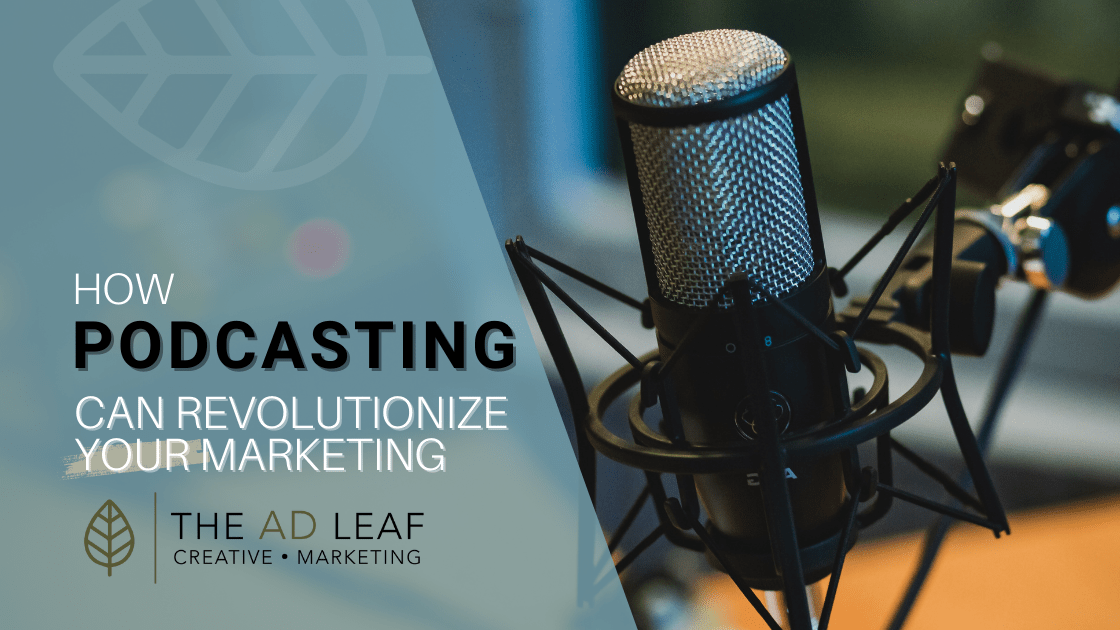How Podcasting Can Revolutionize Your Marketing? Podcasting is becoming increasingly popular among marketers, and for good reason. As a medium, podcasting can be incredibly powerful in helping you reach your target audience and build relationships with them. Through podcasts, you can create engaging content that drives meaningful conversations and encourages listeners to take action.
In today’s world, there seems to be an unlimited number of platforms that provide entertainment and news. Some people still rely on print media, and others prefer to watch cable news. Most people enjoy news and entertainment through a streaming service. An incredibly popular form of entertainment is podcasting, an industry that continues to see growth year after year. More than 50% of the United States population listens to at least one podcast weekly. In the modern era of digital storytelling, podcasting has topped the charts as one of the most popular streaming tools on the market.
There are over 3 million podcasts currently available for streaming, and that number continues to increase daily. Podcasting is a relatively simple method of telling a story or providing entertainment. With the decline of talk radio, podcasts have served as a replacement for people to listen to on their daily commutes.
While the entertainment value of podcasts are widely known, podcasting is still an underutilized and overlooked marketing tool. Businesses can utilize podcasts to better promote their brands and create awareness. Here are several ways to use podcasting as a marketing tool to help your business expand.
1. Podcast Listeners Feel More Productive
Podcasts require far less attention from users to interact with because the idea of a podcast is to be heard. While many people have cut down on their “screen time” such as watching a streaming service or cable TV, they have increased their podcast listening because they view it as passive background noise. Listeners often tune into a podcast while doing daily life chores and activities. Listener productivity makes podcasts ideal for busy individuals or someone who wants their eyes off the screen. By utilizing podcasts as a marketing tool, you will increase your brands reach beyond the scope of social media or streaming platform advertising options.
2. Podcasts Build a Loyal Audience
What makes podcasts stand out drastically from other forms of marketing and content creation is that they allows brands to communicate directly to a captive audience. A podcast with a specific niche for their audience can immediately tackle their target audience with their content while creating bonds all in one. Typically, an audience of a podcast is a loyal one; creating that audience for a brand can be seamless if you know your niche and audience, and it is much easier to reach users than other forms of marketing and branding.
3. Originality
Compared to other forms of social media marketing, the competition is far lower in the podcast realm. Facebook has billions of business pages to push out content and drive-up engagement. Instagram is often inundated with content pieces that are hard to discern from one another. In contrast, Podcasts are much slimmer in terms of quantity, even with over 3 million of them. Apple Podcasts is a highly ranked application on the Apple Store regarding users and content. With the millions of users who stream Spotify, getting a podcast to the public may be easier than creating an Instagram post! Podcasts excel in finding a targeted niche audience compared to a Facebook Business Page for a brand.
4. Provide Value
Brands are always searching for their USP and what they provide to their customers and followers in marketing. It is the core of a business and what drives high engagement on social media pages. What does a service provide? How do customers benefit from being a part of this service? Podcasting makes this step easy as it always provides value to its audience.
Listeners are constantly engaged with their preferred podcast network, and it creates a sense of community, thus establishing an entire network of individuals for said brand.
Listeners of a podcast are constantly gaining new information and knowledge on topics based on discussion when tuning in to the latest episode of their favorite Podcast. It is a constant source of value to the audience.
5. Shareable
Several podcasting platforms allow for shows to be produced and pushed across streaming media. This makes the content easily sharable among communities and friends. Among other social media platforms where brands and businesses establish a following, podcast communities found within Apple Podcasts and Spotify are the most loyal to their favorite show compared to a business page.
6. SEO-Optimized
If a business has an established Facebook or Instagram page and then decides to create a podcast to drive traffic to their pages or website, it is both possible and efficient!
Podcasts are community-driven, so creating a loyal following would then, in turn, boost website and page traffic. Podcasts typically have an internal transcript to describe an episode in notes or provide external links to platform pages. If utilized correctly, podcasting can provide remarkable SEO benefits.
Keyword management is often used with titles of the episodes or in the episode notes, typically in the episode’s transcript to have your episode and podcast show be searchable.
Get Started Today With The AD Leaf Marketing Firm!
Overall, podcasts are a much more creative and effective way of marketing. Podcasting creates a loyal community, produces valuable content for followers, and can drive traffic to a brand’s website or social pages. All while creating one-of-a-kind content that can target a particular niche.
Need help creating and running a successful Podcast while implementing a successful marketing strategy? The AD Leaf Marketing Firm is here to take your business to the next level. Talk to one of our experts to schedule a free consultation with our marketing teams, call us today at 321-255-0900.



